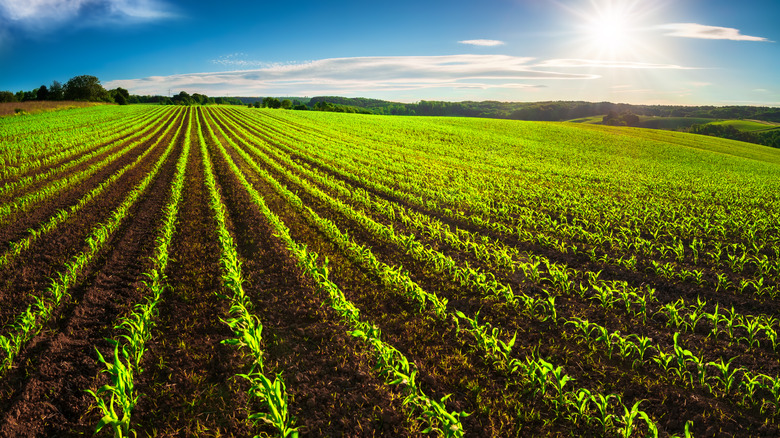Recent Soil Erosion Report Has People Concerned About Midwestern Farms
The eight states that comprise the Midwestern farm belt in the U.S. are an agricultural and economic powerhouse. According to the U.S. Department of Agriculture (USDA), these states — Missouri, Illinois, Indiana, Iowa, Michigan, Ohio, Minnesota, and Wisconsin — account for upwards of 127 million acres of farmland, and produce about $76 billion in annual market value from crops and livestock. But a new study on historical soil erosion rates published in the journal Earth's Future shows a troubling trend that could have long-term consequences for the region.
The recent high-resolution, GPS-aided topographical study looked at erosional escarpments, essentially differences in boundary heights between prairie and farmland in 20 different sites across the region, and concluded that the level of soil erosion is unsustainable based on historical data. In fact, as Science News notes, some 57.6 billion metric tons of soil have eroded since the onset of agriculture in the region about 160 years ago.
What the study means for the future of Midwestern farming
Despite the enormous number, it's not just the overall soil loss that's concerning — it is the rate being lost each year. As the Earth's Future study noted, soil erosion is occurring in agricultural regions around the globe. What's especially problematic in the Midwest is the nearly 2 millimeters being lost on average annually. Per Science News, that number is almost twice what the USDA considers sustainable.
And as NPR observes, not all soil erosion is the same. It's the type of soil being lost that's most damaging to the Midwest. Topsoil, the fertile, organic carbon-rich layer known as A-horizon, has been particularly hard hit by erosion in the region. Evan Thaler, a Ph.D. student at the University of Massachusetts, Amherst and one of the researchers of the Earth's Future study, believes as much as 33% of A-horizon soils have eroded from the Midwestern farm belt, which could have harmful long-term effects on crop yields and productivity. In the Proceedings of the National Academy of the Sciences, Thaler and his research colleagues Qian Yu and Isaac Larsen projected an estimated economic loss of $2.8 billion annually from A-horizon erosion, although that number could fluctuate by nearly $1 million in either direction.
"To me, it's not important whether it's exactly a third," said Minnesota soil health specialist Anna Cates, quoted in NPR. "Maybe it's twenty percent, maybe it's forty percent. There's a lot of topsoil gone from the hills."

